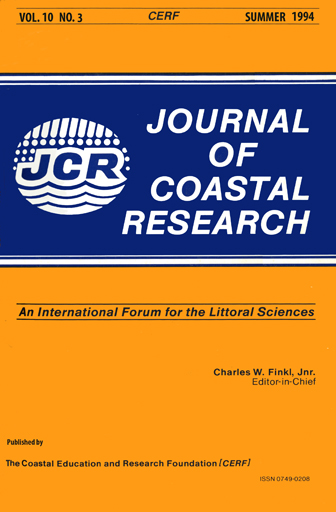Cross-Shore Structure of Infragravity Standing Wave Motion and Morphological Adjustment: An Example from Northern Zealand, Denmark
Keywords:
Nearshore bars, edge waves, bispectral analysisAbstract
A set of eight manometer tubes was deployed across a barred surf zone in Northern Zealand, Denmark in order to resolve the cross-shore structure of infragravity wave motions. During a storm, a single dominant standing infragravity wave was generated. This wave had a frequency similar to waves observed on previous occasions. Nearshore bars migrated 5-10 m landward (bar 1) and seaward (bar 2), respectively, with maximum accretion occurring close to the antinodes of the standing wave. The field data thus support theoretical models for bar formation and adjustment, according to which bars are generated through suspended sediment transport convergence at infragravity standing wave antinodes. The generation of the infragravity waves was investigated using bispectral analysis techniques. It was found that during the peak of the storm, two separate incident wave components transferred energy to the infragravity wave. As the storm waned, the incident wave components became further separated in frequency space. Simultaneously, the standing infragravity wave decayed.


